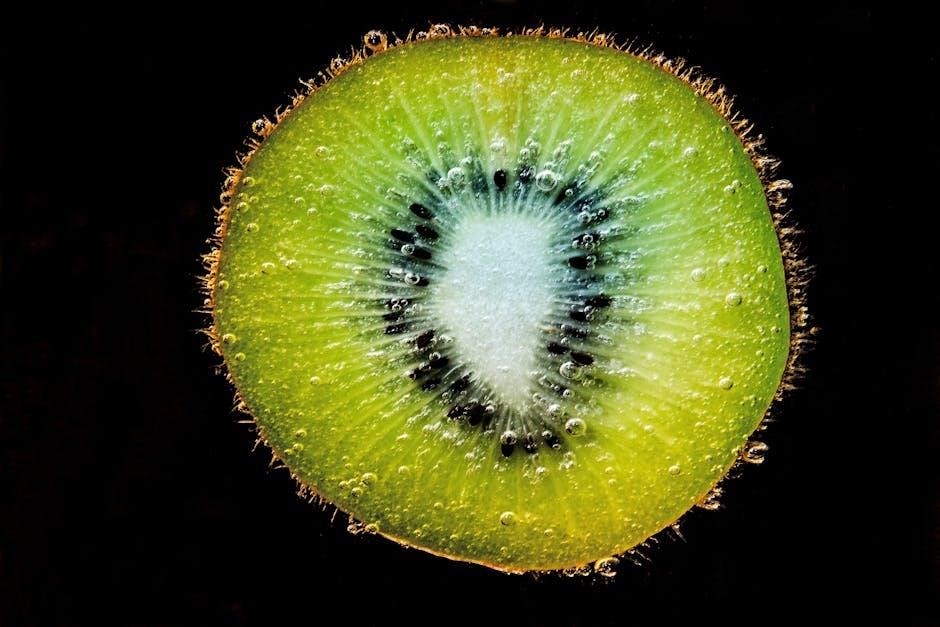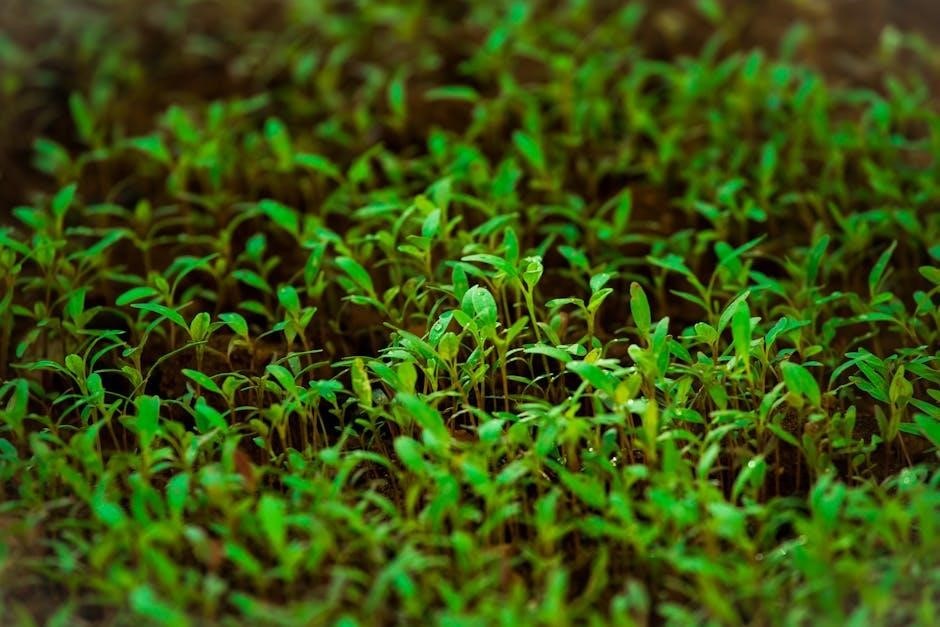
The Bad Seed PDF: An Overview
Discover the world of “The Bad Seed” through readily available PDF resources. These digital versions offer convenient access to both Jory John’s children’s book and William March’s novel, facilitating educational and personal exploration of their themes.
The title “The Bad Seed” encompasses two distinct yet compelling works: a children’s book by Jory John and Pete Oswald, and a psychological thriller novel by William March. John’s book presents a narrative about a seed grappling with its self-perception as being “bad,” exploring themes of acceptance and transformation. On the other hand, March’s novel delves into the chilling story of a young girl named Rhoda Penmark, whose outwardly innocent demeanor masks a sinister nature.
Both iterations of “The Bad Seed” offer unique perspectives on the concept of inherent nature versus nurture, prompting reflection on how individuals are shaped by their experiences and predispositions. The accessibility of these works in PDF format allows for easy dissemination and study, enabling a broader audience to engage with the stories’ complex themes and characters. Whether for educational purposes, personal enjoyment, or scholarly analysis, “The Bad Seed” in its various forms continues to captivate and provoke discussion.
Availability of “The Bad Seed” in PDF Format
Both versions of “The Bad Seed,” the children’s book by Jory John and Pete Oswald, and the novel by William March, are widely available in PDF format across various online platforms. These digital versions provide convenient access for readers interested in exploring the stories and their underlying themes. Numerous websites offer free downloads of “The Bad Seed” in PDF, catering to students, educators, and general readers seeking to engage with the material.

“The Bad Seed” by Jory John and Pete Oswald
This delightful children’s book explores themes of self-acceptance and transformation. With charming text and expressive illustrations, it tells the story of a “bad seed” learning to change.
Synopsis of the Children’s Book
Jory John and Pete Oswald’s “The Bad Seed” introduces us to a seed with a self-proclaimed reputation for being “bad.” He has bad manners, a bad temper, and a generally bad attitude. The story unfolds as the bad seed recounts the events that led to his current state, hinting at a past filled with less-than-ideal circumstances.
Initially, the seed wasn’t always bad. He had a different perspective until various experiences shifted his outlook. The narrative delicately explores the seed’s journey as he grapples with his identity and the label he has adopted.
Ultimately, the book delves into the themes of change and self-acceptance, subtly suggesting that even the “baddest” of seeds can transform. Through the seed’s experiences, readers are encouraged to consider the power of will and the possibility of embracing one’s true self.
Themes Explored in the Story
Jory John and Pete Oswald’s “The Bad Seed” delves into several important themes relevant to children and adults alike. Central to the story is the theme of self-perception, exploring how the seed views himself and how this self-image influences his behavior. The narrative also touches upon the theme of change, suggesting that individuals are not fixed entities and have the capacity to evolve.

Acceptance is another key theme, both in terms of accepting oneself and being accepted by others. The story subtly encourages readers to consider the impact of societal labels and the potential for overcoming negative perceptions. Furthermore, “The Bad Seed” explores the theme of redemption, hinting at the possibility of transforming from “bad” to “good.”
Ultimately, the book promotes the idea of embracing individuality and recognizing the power within oneself to shape one’s destiny. It champions the transformative effects of will, acceptance, and simply being true to oneself, providing a heartwarming message for readers of all ages.
Social Emotional Learning Activities
“The Bad Seed” by Jory John provides a fantastic opportunity for social-emotional learning (SEL) activities in educational settings. Teachers can utilize the story to facilitate discussions about self-awareness, encouraging students to reflect on their own feelings and behaviors. Activities can include identifying the seed’s emotions throughout the story and relating them to personal experiences.
The book also lends itself well to lessons on responsible decision-making. Students can analyze the seed’s choices and discuss alternative actions he could have taken. Furthermore, “The Bad Seed” can be used to promote relationship skills by exploring how the seed’s behavior affects his interactions with others.
Activities like role-playing scenarios and group discussions can help students develop empathy and understand different perspectives. The story’s themes of acceptance and change can be further explored through art projects or writing prompts, allowing students to express their own understanding of SEL concepts and apply them to their lives, fostering a positive classroom environment.

“The Bad Seed” by William March
William March’s “The Bad Seed” delves into the unsettling story of Rhoda Penmark, a seemingly innocent child harboring sinister tendencies. The novel explores themes of nature versus nurture and the origins of evil.
The Novel’s Storyline
William March’s “The Bad Seed” revolves around Rhoda Penmark, an outwardly charming eight-year-old girl who harbors a dark secret. The story unfolds as a series of unsettling events reveal Rhoda’s manipulative and potentially murderous nature. Her mother, Christine, initially dismisses suspicions, but as evidence mounts, she begins to question Rhoda’s true character and the possibility of inherited evil.
The narrative tension escalates with each incident, drawing Christine deeper into a horrifying realization. The novel explores the psychological impact on Christine as she grapples with the implications of her daughter’s actions. The storyline examines themes of nature versus nurture, questioning whether Rhoda’s behavior is a product of her environment or a manifestation of innate malevolence.

The ending deviates significantly from the 1956 film adaptation, offering a darker and more ambiguous resolution. The novel leaves readers contemplating the complexities of evil and the limits of parental responsibility.
Parental Responsibility in the Novel
William March’s “The Bad Seed” critically examines the multifaceted roles and inherent failures of parents, particularly Christine Penmark, in raising children. The novel probes into the depths of parental responsibility when confronted with a child exhibiting disturbing tendencies. Christine’s initial denial and subsequent struggle to accept Rhoda’s true nature highlight the challenges parents face in acknowledging and addressing potential issues in their offspring.
The narrative questions the extent to which parents are accountable for their children’s actions, especially when those actions suggest a predisposition towards evil. Christine’s investigation into her own family history further complicates the notion of parental responsibility, as she uncovers a legacy of violence that may have influenced Rhoda’s behavior.
The novel ultimately challenges readers to consider the profound impact of parental influence, both genetically and environmentally, on a child’s development and moral compass, prompting reflection on the burdens and obligations of parenthood.
Psychology of Evil
“The Bad Seed” deeply grapples with the unsettling question of the psychology of evil, particularly the nature versus nurture debate. The novel presents Rhoda Penmark, a seemingly innocent child who exhibits manipulative and murderous tendencies, challenging readers to confront the possibility of inherent evil.
March explores whether Rhoda’s behavior is a result of genetic predisposition, stemming from a lineage of criminal behavior, or if it is influenced by environmental factors and upbringing. The novel delves into the complexities of Rhoda’s psyche, examining her lack of empathy, calculated actions, and remorselessness, prompting questions about the origins and manifestations of evil in the human mind.

Through Rhoda’s character, “The Bad Seed” raises profound questions about the capacity for evil that may exist within individuals, regardless of age or appearance, and forces us to consider the uncomfortable possibility that evil can be an intrinsic part of human nature, a chilling exploration of the darkest aspects of the human condition.
Comparison of Novel and 1956 Film Endings
The endings of William March’s novel “The Bad Seed” and the 1956 film adaptation differ significantly, reflecting the societal and censorship constraints of the time. The novel concludes with Rhoda Penmark evading justice, suggesting the disturbing idea that evil can go unpunished. This bleak ending emphasizes the novel’s exploration of inherent evil and the limitations of justice.
In contrast, the film provides a more morally reassuring conclusion. Due to the Hays Code, which governed Hollywood films at the time, evil could not be portrayed as triumphant. Consequently, the film adds a “poetic justice” scene where Rhoda is struck by lightning, ensuring she faces retribution for her actions. This ending, while diverging from the novel’s grim realism, offered audiences a sense of moral order being restored.
The film’s ending, therefore, softened the novel’s unsettling message, aligning with the era’s demand for clear-cut morality in cinema. The novel’s ambiguous ending leaves a lasting impact, making the reader think about the themes.

Analyzing Characters and Themes
Explore the depths of “The Bad Seed” through character studies and thematic analyses. Delve into Rhoda Penmark’s complex nature and the story’s broader exploration of the timeless battle between good and evil, as explored within the narrative.
Rhoda Penmark’s Character Analysis
Rhoda Penmark, the chilling protagonist of William March’s “The Bad Seed,” presents a complex study in the nature versus nurture debate. On the surface, she is an angelic, well-mannered eight-year-old. However, beneath this façade lies a calculating and ruthless nature, devoid of empathy or remorse.
Her meticulous planning and cold execution of her desires challenge conventional notions of childhood innocence. Rhoda’s character raises disturbing questions about the origins of evil, suggesting that it may not always be a product of environment or upbringing.
The novel delves into the possibility of innate wickedness, a concept that is both unsettling and thought-provoking. Rhoda’s lack of conscience and her manipulative behavior make her a truly terrifying figure, forcing readers to confront uncomfortable truths about human nature. Her character serves as a stark reminder that appearances can be deceiving and that evil can sometimes reside in the most unexpected places. Through Rhoda, March explores the depths of human depravity and the potential for darkness within us all.
Exploration of Good vs. Evil
“The Bad Seed,” in both its literary and cinematic forms, provides a stark exploration of the age-old conflict between good and evil. William March’s novel delves into the unsettling possibility that evil can be inherent, challenging the notion that it is solely a product of environment or upbringing.
The character of Rhoda Penmark embodies this disturbing concept, presenting a seemingly innocent exterior that masks a cold and calculating nature. Her actions force the audience to confront the uncomfortable reality that evil can exist even in the most unexpected places, blurring the lines between nature and nurture.
The story raises profound questions about human morality and the potential for darkness within us all. Through its narrative, “The Bad Seed” prompts reflection on the complexities of human nature and the enduring struggle between virtuous and malevolent forces. It’s a timeless exploration that continues to resonate.

Accessing and Sharing “The Bad Seed” PDF
Downloading “The Bad Seed” PDF for Free
Finding “The Bad Seed” PDF for free is achievable through various online platforms. Project Gutenberg offers classic literature, potentially including William March’s novel, in downloadable PDF format. Ensure legality by verifying copyright status before downloading.
Several websites may host unofficial PDF versions of both the novel and the children’s book. Exercise caution and scan downloaded files for malware. Always prioritize legal and ethical access to copyrighted materials. Educational institutions and libraries may offer access to licensed digital copies.
When searching online, use specific keywords like “The Bad Seed PDF free download” but be wary of misleading links. Consider exploring online library archives or digital repositories for legitimate, cost-free access to the texts. Remember to respect copyright laws and support authors by purchasing official versions when possible.

Related Resources and Materials
Explore supplementary resources like lesson plans, activities, and essay reflections related to “The Bad Seed.” These materials enhance understanding and offer diverse perspectives on the story’s themes and characters, providing valuable educational support.
The Bad Seed Lesson and Activities
Enhance your classroom with “The Bad Seed” lesson plans and engaging activities designed for social-emotional learning. These resources delve into themes of behavior, acceptance, and personal transformation, inspired by Jory John’s book. Incorporate lapbooks and digital materials for interactive learning experiences. Explore character analysis, discussion prompts, and creative writing exercises to foster critical thinking and empathy.
The activities promote self-reflection and understanding of emotions, helping students identify and manage their feelings effectively. Guidance lessons focus on positive behavior and the power of choice, encouraging students to make responsible decisions. These resources provide teachers with comprehensive tools to address social-emotional development in a fun and meaningful way. Engage students with “The Bad Seed” and cultivate a positive classroom environment through thoughtful discussions and interactive exercises.
“The Bad Seed” Essay Reflections

Delve into critical analyses of William March’s “The Bad Seed” through insightful essay reflections. These essays explore themes of good versus evil, parental responsibility, and the psychology of a child exhibiting sociopathic tendencies. Examine the character of Rhoda Penmark and her impact on those around her, focusing on the novel’s exploration of inherited traits and environmental influences.
Reflections also compare the book’s ending to the 1956 film adaptation, highlighting the differences in moral justice and thematic resolution; Investigate the portrayal of evil and the novel’s lasting impact on the horror genre. These essays offer a comprehensive understanding of the complex themes and characters, providing a deeper appreciation for March’s exploration of human nature and morality. Explore varied interpretations and critical perspectives on this chilling classic.